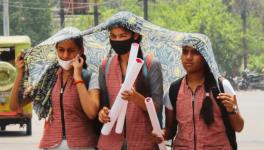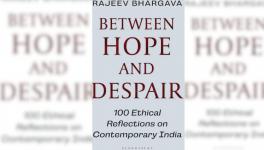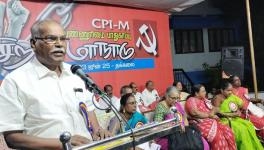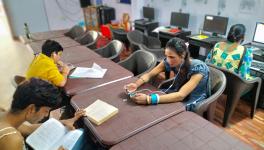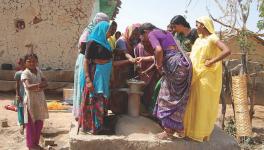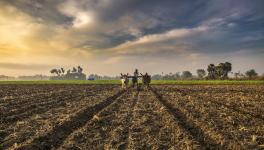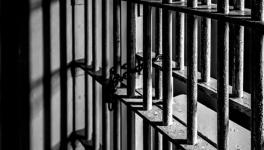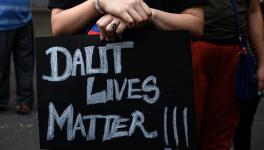Over Half of Prisoners in India are Muslims, Dalits and Adivasis
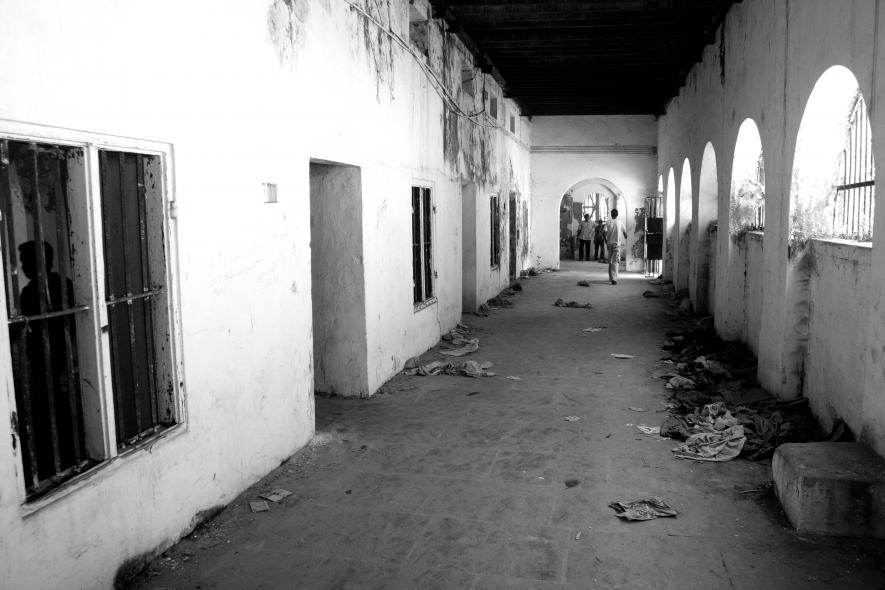
In a chilling indictment of the prevailing social system, a recently released government report on prison statistics revealed that just over half of all convicts and undertrials in India prisons are Muslims or dalits or adivasis. The share of these three communities in India’s population is 39.4%, according to the last Census held in 2011. But the proportion of prisoners from these communities is 50.8%.
These three communities are the most economically and socially backward ones in India. Literacy rates are lower, school and higher education access is more limited, poverty rates are higher, unemployment is higher and average landholding sizes are lesser than other communities in society. Besides this, they also are subject to social oppression, violence and discrimination by the so called ‘upper castes’.
In the case of dalits and adivasis, this social oppression has been a centuries- old legacy. For the Muslim community, the recent rise of Sangh Parivar affiliated outfits – both in the form of Bharatiya Janata Party-led governments at the Centre and several States, and in various organisations active – has created a new era of vicious hate mongering and violence.
This combination of economic and social backwardness, and discrimination is responsible for the higher rates of imprisonment in Indian jails. This is reminiscent of the condition of Black (African-American) community in the US, which makes up about 13% of the country’s population yet suffers an unconscionably high imprisonment rate of 40%, according to the latest data of the US government.
As seen in the table below, Muslim prisoners made up 18.1% of all the prisoners (convicts and undertrials) in India. This is more than the proportion of Muslims in India’s population, which was 14.2%, as per Census 2011. In the case of dalits (Scheduled Castes or SCs), the gap is even bigger.
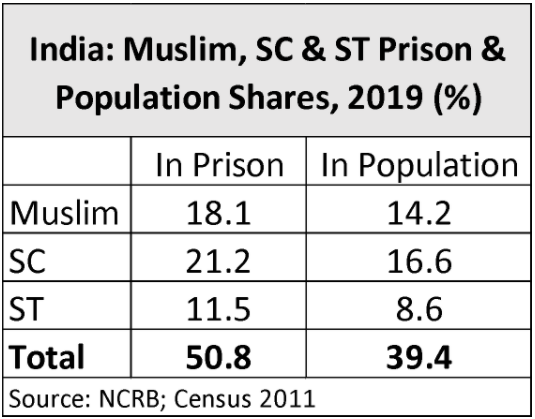
While the share of dalits in India’s population is 16.6%, they make up 21.2% of the prisoners. Similarly, adivasis (Scheduled Tribes or STs) make up 8.6% of the country’s population but in prisons, their share is 11.5%.
Analysis of earlier years suggests that this skew has always existed, despite all the claims of social justice, equality before law and “sabka saath, sabka vikas” (development for all) by successive governments. It is a feature of India’s unequal and discriminatory socio-economic system, and not a mere aberration.
Disempowered Sections of Society
There are several factors at work in creating this shocking state of affairs. First and foremost is the fact that persons belonging to these communities are mostly poor. This prevents them getting access to proper legal advice right from the time of police investigation up to the proceedings in courts. Their disadvantaged position prevents them from exercising such basic legal rights as getting copies of police or court documents and verifying that authentic information is being recorded, getting representation of lawyers who are well versed and skilled enough to negotiate the maze of judicial proceedings, applying for bail or parole, petitioning to higher appellate bodies, etc.
In this, not only is their poverty an obstacle but also the widely prevalent bias displayed by police and often by courts against them. When those who should be acting fairly and impartially start displaying such communal and casteist biases against Muslims or dalits and adivasis, little justice is expected.
In Indian prisons, about 30% of the inmates are convicts and about 69% are undertrials, according to the National Crime Records Bureau report, Prison Statistics of India 2019. The remaining 1% is detenus or other types of prisoners. The vast number of undertrials is mostly those people who could not post bail because of not having enough resources. Obviously then, the poorest people get trapped in jails because of their poverty. Among them are large proportions of these three communities.
State Governments’ Role - Muslims
The table below shows that in Uttar Pradesh, 27% of prison inmates are Muslims although their proportion in the state’s population is 20%. In Gujarat, Muslims form only 10% of the state’s population but their proportion among the prisoners is a shocking 27%. This is the worst record among all states. In Assam, the state with the highest Muslim population (Jammu & Kashmir and Lakshadweep have more but they are Union Territories), 45% of prisoners are Muslims although in the state’s population their share is 34%.
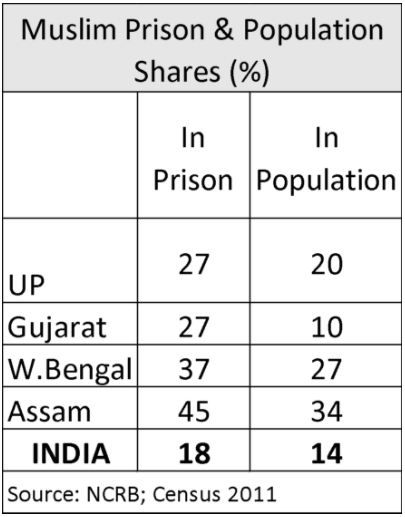
What is common to these three states is that they have BJP-led governments and (not coincidentally) a high degree of communal polarisation fostered by the Sangh Parivar and BJP. In UP, the Yogi Adityanath government came to power in 2017 and it has been energetically pursuing Muslim-baiting policies whether it be the so-called anti-love-jihad campaign or encouragement to provocative anti-Muslim shows of strength, or the brutal attack on anti-CAA (Citizenship Amendment Act) protestors which started in the last months of 2019 (the resulting imprisonments would be included in this data which is till December 2019).
Gujarat, of course, is the well-known crucible of aggressive Hinduism where the BJP has been in power for over 25 years, and which saw one of the most barbaric anti-Muslim pogroms in India’s history in February-March 2000. Assam in the North-East is a recent conquest of BJP but the simmering communal tensions cross-cutting ethnic fractures have been weaponised by the Sangh Parivar/BJP for electoral gains. The result is this high proportion of Muslim prisoners.
West Bengal presents an interesting facet of this issue: it has been governed by the Mamata Banerjee-led Trinamool Congress since 2011 which tirelessly portrays itself as a defender of minority rights. Yet, the state’s prisoners include 37% from the Muslim community, although its share in the state’s population is 27%. Clearly, the TMC government is paying lip service to defending the interests of Muslims whereas its machinery looks no different from a BJP government’s when it comes to imprisoning Muslims.
State Governments’ Role – Dalits & Adivasis
A similar picture emerges if one looks at state-wise data on dalit and adivasi inmates of prisons, as shown in the table below.
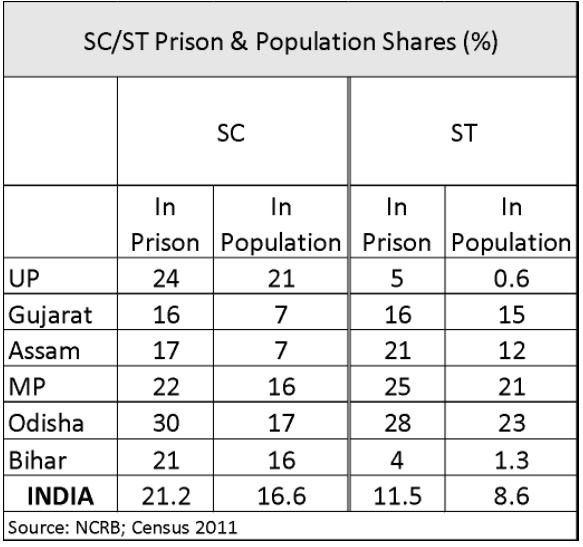
UP, Gujarat, Assam, Madhya Pradesh (all BJP ruled states) and Bihar (ruled by Janata Dal-United/BJP alliance) – all of them have much higher proportions of dalits and adivasis in jails compared with the population shares in respective states. While in UP, 24% of prisoners are dalit compared with 21% salits in the population, even the tiny adivasi community in UP (just 0.6%, concentrated in Sonabhadra district) has not been spared and make up 5% of the state’s prison population.
Gujarat shows a similar kind of hostility towards dalits and adivasis as it does to Muslims, with aalits making up 16% of prisoners compared with their population share of 7% and adivasis forming another 16% of prison inmates, slightly more than their 15% share in overall population of state.
In MP, a BJP government was installed after engineering defections of some greedy Congress MLAs earlier this year. So, the data would refer to the period under Congress government led by Kamal Nath, who had narrowly led the Congress to victory in 2018. But an analysis of past years of uninterrupted BJP rule confirms that the short-lived Congress ministry in the state simply continued what the BJP had been doing all these years.
In Bihar, too, BJP gained power in 2016 by overthrowing of the elected JDU-Rashtriya Janata Dal government and forming a fresh post-election alliance with Nitish Kumar’s JDU. Yet, the two allies have continued their hostility towards dalits and the small adivasi community, as can be seen from the table above. Bihar has 16% dalit share in its population but in the prisons, this share shoots up to 21%. Similarly, though the adivasis make up only 1.3% of the state’s population, they are 4% of prisoners.
Odisha is a state with a non-BJP non-Congress government led by Naveen Patnaik for the past two decades. It has 17% dalit and 23% adivasi population – that makes up about 40% of the state’s whole population. But, even with such a sizeable presence, these communities face the wrath and bias of the criminal justice system. As much as 30% of prison inmates are dalits and 28% adivasis – together making up 58% of the state’s prisoners.
What Needs To Be Done
Most legal or prison reform commissions or committees set up by the governments have conveniently ignored this ongoing injustice. Most of the political parties, barring the Left, have never addressed this because they only seek to indulge in patronage politics – protect their own supporters and disregard others. Rights and advocacy groups, too, often tend to ignore this. Any of the usual prescriptions for changing this tragic situation are some kind of prison reform or measly legal aid. The system is too powerful and its arms too long.
To change this situation, first, a thorough and comprehensive enquiry needs to be carried out, which should include collection of complete data on the economic, educational, social background of the inmates of prisons, an analysis of the cases they are charged (or convicted) with and an immediate disposal of all undertrials bail applications (as per legal provisions), especially those from Muslim, dalit and adivasi communities.
In addition, there should be investigation of political or agitational charges against these inmates, and their speedy disposal. This is necessary because many Muslims, dalits and tribals have been jailed for protesting on a range of democratic demands, such as opposition to takeover of forest land for unscrupulous natural resource exploitation or infrastructure building; against caste atrocities; against communal laws (like the CAA) or falsely implicated in charges of communal and casteist nature.
All this needs to be backed by a wider, more sweeping, movement in defence of the rights and interests of the minorities, dalits and adivasis, especially in these times when a government of revanchist and obscurantist standard bearers is in power, and is functioning with impunity
Get the latest reports & analysis with people's perspective on Protests, movements & deep analytical videos, discussions of the current affairs in your Telegram app. Subscribe to NewsClick's Telegram channel & get Real-Time updates on stories, as they get published on our website.










